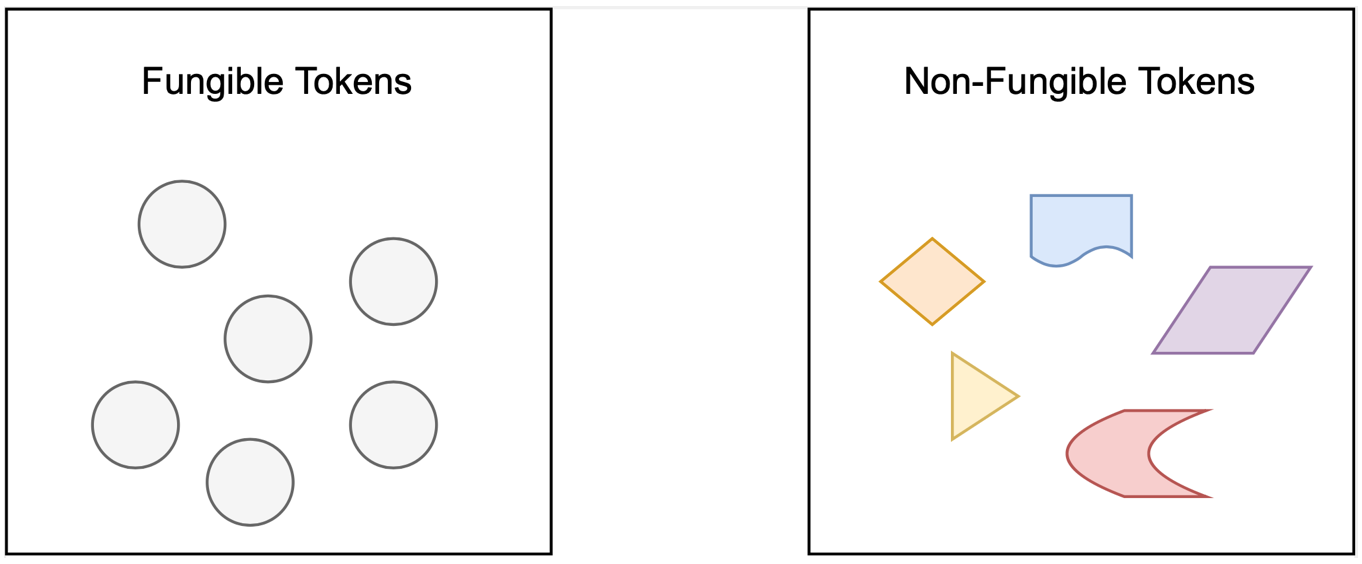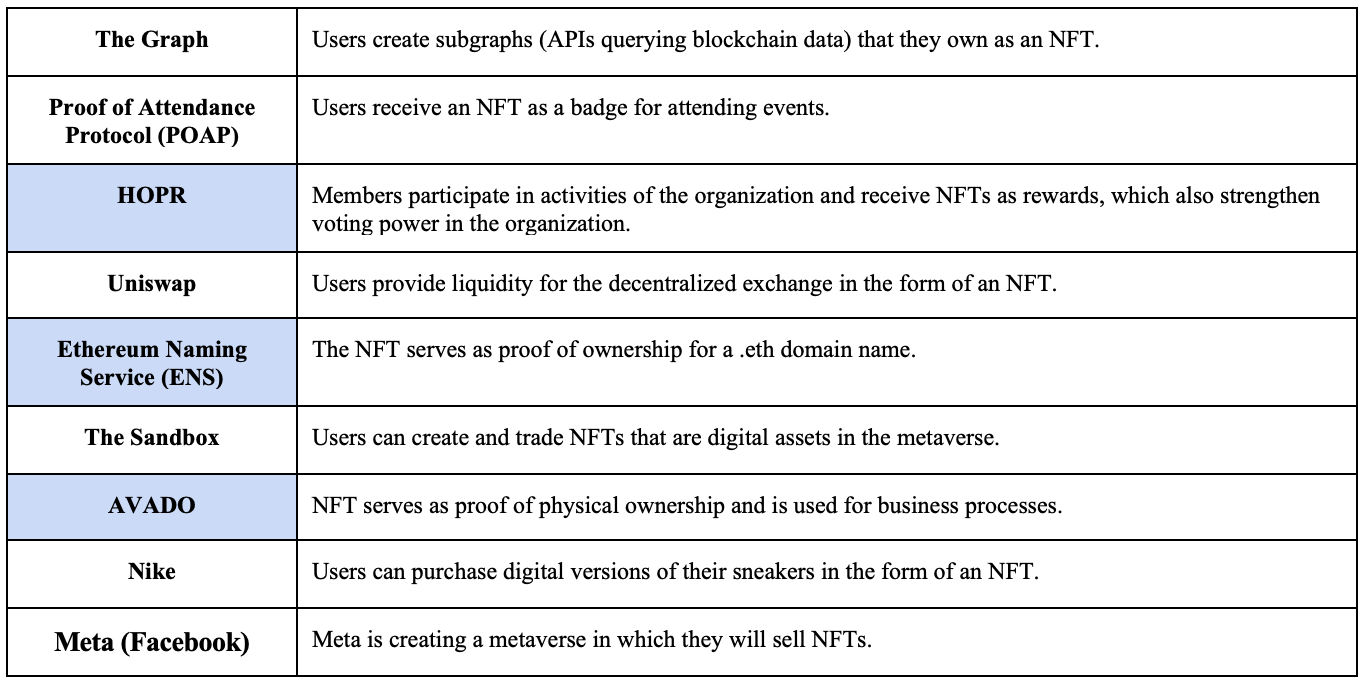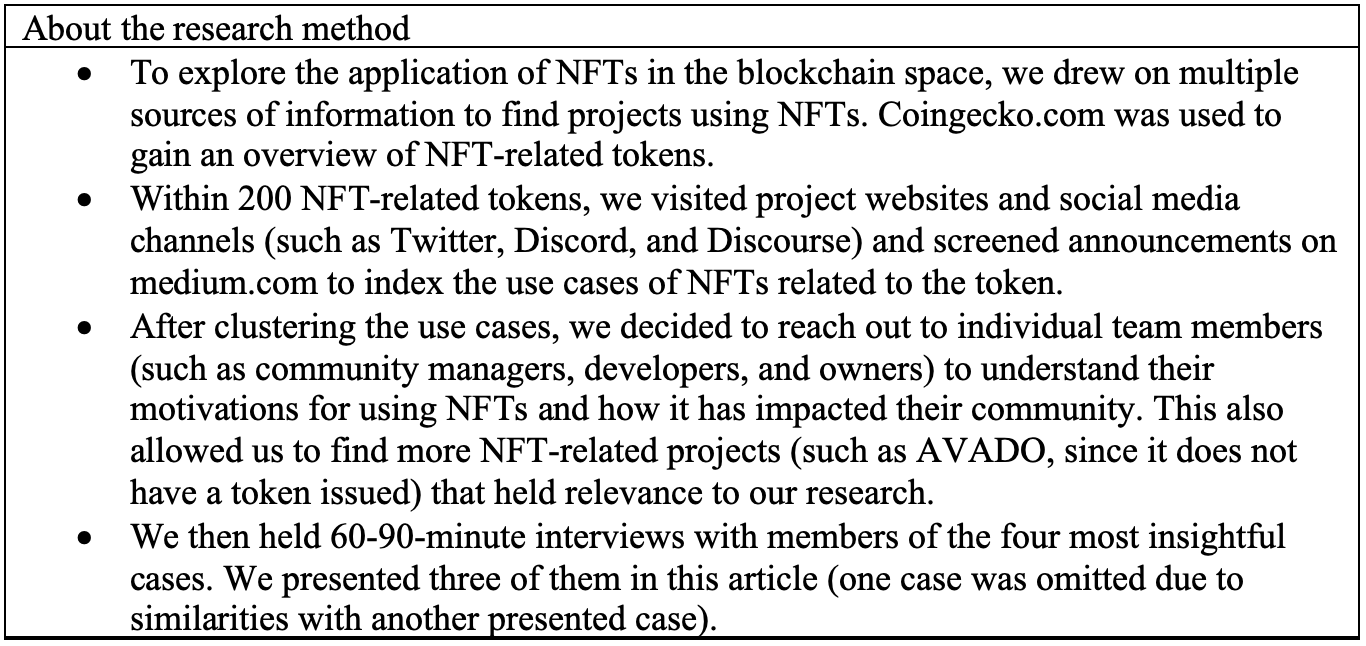California Management Review
California Management Review is a premier academic management journal published at UC Berkeley
by Julian Mueller, Estevan Vilar, and Georg Von Krogh

Image Credit | Tezos
Blockchains, cryptocurrencies, tokens, and non-fungible tokens (NFTs) have recently made business headlines. Cryptocurrencies reached a valuation of over 2 trillion USD, and application diversity is increasing by the hour. NFT has become Collin’s Dictionary’s Word of the Year 2021 and is a candidate for the 2022 MIT Technology Breakthrough. Recently, scholars found that blockchains could be used to motivate cooperation and coordination in online communities,1 leading to a growing interest in the applications of blockchain technologies across settings.2 This article posits that beyond artwork, NFTs could prove to be powerful tools to engage online communities in novel ways.
“Designing Governance Mechanisms in Platform Ecosystems: Addressing the Paradox of Openness through Blockchain Technology” by Jessica Schmeiss, Katharina Hoelzle, & Robin P. G. Tech. (Vol. 62/1) 2019.
“How to Foster and Sustain Engagement in Virtual Communities” by Constance Elise Porter, Naveen Donthu, William H. MacElroy, & Donna Wydra. (Vol. 53/4) 2011.
Online communities have emerged as potent forms of organizing discourse in many economic and social areas. In such circles, a vibrant and engaged user base is essential for sustaining community activity.3 Thus, measures to promote engagement with and between community members are an important ingredient for success.4 However, sustainable community engagement is a challenge given the staggering fluctuations in membership5,6 and fading motivations to contribute.7 Given the mounting evidence, we believe NFTs could add and serve as powerful incentives to build communities and keep members engaged.8
In the following, we first offer the reader a better understanding of NFTs by distinguishing them from blockchains and cryptocurrencies. Then, we present three strategies to leverage NFTs in online communities: (1) turning customers into contributors, (2) creating social belonging, and (3) bridging intrinsic and extrinsic member motivations. Additionally, we present a 3x3 configuration matrix to support the identification of an organization’s most suitable NFT strategy. We then exemplify the strategies through three real use cases developed from interviews with industry experts. Finally, we discuss organizational challenges to be considered when adopting NFTs.
The technology behind NFTs can be understood by distinguishing it from other related but different technologies. For one, blockchains are distributed digital ledgers managed via cryptographic algorithms.9 They eliminate the need for a centralized verification system by providing a secure, transparent, and immutable trail of the transaction history. These features are safeguarded by the network participants who provide computing power (proof-of-work) or money (proof-of-stake) in exchange for the blockchain’s native cryptocurrency (e.g., ETH for Ethereum) to validate new transactions. The development of smart contracts – algorithmically enforced agreements between two parties – allows the proliferation of (decentralized) applications in various domains such as supply chain tracking, medical data transfer, digital identity issuance, or intellectual property management.
Next, the fungibility of an asset is its ability to be traded for another of the same type, e.g., exchanging one Bitcoin for another random Bitcoin. Conversely, Non-Fungible Tokens (NFTs) are unique assets that cannot be copied or changed but are tradeable. The blockchain serves as a public record of their provenance.

Figure 1: Fungible and Non-Fungible tokens
NFT adoption was boosted by the ERC-721 standard, released on the Ethereum Blockchain in 2021. It facilitated the issuance of non-fungible tokens with smart contracts, encouraging companies, including Adidas, McDonald’s, and TIME Magazine, to explore the potential of NFTs in their business. Today, NFTs are most prevalent in the digital art and collectibles spaces.
We categorized projects along two dimensions by examining more than 200 blockchain applications and NFT projects that draw on online communities initiated and/or managed by the organization. First, organizations and their online communities differ in how they engage in the creation process (bottom-up, hybrid, top-down). Second, organizations differ in their orientation towards their online community (operational, social, strategic).10 The categorization allowed us to identify three configurations (blue boxes) that creatively use NFTs as a powerful incentivization tool. This blue diagonal represents configurations in which NFTs have successfully fostered bi- or multi-lateral engagement. We present three cases along this diagonal. The other six cases employ NFTs more passively, e.g., the Graph issues NFTs as a receipt for creating a search query, while Nike sells a digital sneaker as an NFT. While these are successful use cases, they do not represent configurations in which NFTs foster and incentivize community activity or engagement.

Table 1: Examples of organizations using NFTs in different configurations

Table 2: Exemplar organizations and their respective NFT deployment in online communities
“The NFT is a trigger for a lot of processes, and these processes can be made very efficient because they are automated. Instead of verifying a user’s warranty, or if he has signed something, or to check if he is in a database that I would need to maintain, I simply check his NFT.”
- Bernd Lapp, CEO of AVADO
AVADO is a blockchain-computer manufacturer offering all-in-one solutions for blockchain computing power, storage capacity, and internet bandwidth delegation. AVADO leverages the non-fungibility of NFTs to accurately and automatically identify customers and pair devices through an entirely anonymous process. The NFTs that customers generate (i.e., “mint”) contains information like the time of purchase, warranty, and the device’s technical specifications, absent personal information.
The turning customers into contributors strategy leverages NFTs to incentivize customers towards more active community member roles. This strategy is well suited for organizations seeking to deploy top-down online community structures for resolving operational tasks, such as answering troubleshooting questions from new customers in the case of AVADO, which presents an attractive value proposition because such delegation can reduce the organization’s fixed and variable operational costs.11
AVADO took a top-down approach to face the dynamic demand for onboarding support. It set up an incentive structure for its customer base via NFTs to add peer-to-peer assistance or contributions to the common knowledge base. Each device sold releases a budget that users can allocate through “praises.” AVADO then rewards helpers with a US-pegged stable coin cryptocurrency (DAI) according to the number of praises received (one praise was worth 11$ in February 2022). According to Lapp, active community members receive up to 500$ a month through “praises,” eliminating AVADO’s need to hire a dedicated support team. This strategy incentivizes customers to engage in mundane tasks that often need significant intrinsic motivation in other settings.12 The company managed to grow its customer base by over 100% within the last year without hiring a single customer support member.
Bernd Lapp has been part of the blockchain space since 2014 when he first heard about the capabilities of Bitcoin. In 2015, he joined the Ethereum Foundation as an advisory board member. In 2018, he joined the DAppNode team that would later spin out Avado as a node manufacturer, where Bernd is now co-founder and CEO.
“When Vitalik [founder of Ethereum] just put his .eth name on his Twitter, it started to blow up. This changed our thinking; the names are not just for cryptocurrency payments, they’re not just websites, people associating this, just like branding, it’s like your digital identity.”
- Jeff Lau, Senior Developer of ENS
Sociality – a tendency for people to build rich and supportive relations – is worth striving for in online communities because it keeps people engaged.13,14 This second strategy aims at creating social belonging in online communities that emerge in both a top-down and bottom-up fashion. Providing infrastructure for users to create and shape their online identities within the ecosystem has proven paramount for promoting sociality. The Ethereum Naming Service (ENS) represents this infrastructure for the Ethereum ecosystem. Its significance is evident from the average weekly fees users pay to ENS of approximately 300,000 USD.15
ENS is a decentralized protocol launched in 2017 before NFTs became standardized. Its role is analogous to the Domain Name System (DNS) that current web applications use insofar as it translates computer identifiers into easily readable names. However, as its name suggests, ENS provides this service on the Ethereum blockchain. For instance, the wallet address of Vitalik Buterin, founder of Ethereum, is 0xAb5801a7D398351b8bE11C439e05C5B3259aeC9B, now resolved by the ENS address vb.eth.
In 2019, ENS migrated its registry into an NFT (ERC-721) format. Consequently, ownership of ENS domain names became transferable via conventional NFT marketplaces. Initially, the goal was to make the Ethereum blockchain more accessible for users. What ENS did not expect, however, was that .eth would turn into a signal of support for Ethereum, a marker of community belonging, and a piece of digital identity for users within the Ethereum blockchain. It allows members to link their identity to their actions transparently and verifiably while protecting their anonymity.16
Jeff conducted a Twitter survey to understand why users would display their .eth identity on the platform. The survey results indicated that being able to display support, develop a sense of belonging, and the increased trust from verifiable community figures are powerful social signals that promote knowledge exchange among users.
Jeff Lau is a trained graphic designer who switched to web development and entered the blockchain space in 2016. In 2017, he pitched a proposal to Nick Johnson (founder of ENS) for a freelance gig and has been with ENS ever since. Jeff is now a senior member of ENS and mentors developers who want to enter the Web3 space.
“NFTs are an interesting concept, like a lot of the things that you do anyway can be captured by NFTs. It’s just a different way of thinking about something, like a token of gratitude or the representation of something that a community member did.”
- Sebastian Brügel, CEO of HOPR
HOPR uses NFTs to incent community members to engage in key strategic network development decisions. Additionally, to attract new users, HOPR has gamified its onboarding with an educational online treasure hunt that awards valuable NFTs and tokens as prizes. HOPR uses the third strategy, where NFTs are deployed to bridge intrinsic and extrinsic motivation to leverage the community strategically.
From past research on online communities, we understand that intrinsically motivated members who find the tasks inherently attractive contribute more than extrinsically motivated individuals who perform tasks in exchange for a tangible reward.17 Yet, rather than rewards crowding out intrinsic motivation, we also know that a mix of extrinsic and intrinsic motivation may offer the best results under many conditions.18 This is particularly true in projects expected to be community-driven, and such members are required to create and discuss strategic initiatives.
The HOPR Association aims to provide data privacy and control to users. The network represents a decentralized, anonymous peer-to-peer network run and owned by its users (nodes) and governed via a Decentralized Autonomous Organization (DAO) comprised of all HOPR holders. The DAO coordinates and makes decisions for the HOPR protocol via democratic votes on the community’s proposals (1 token = 1 vote).
HOPR NFTs work as interest rate boosters and allow users to upgrade the benefits they get from depositing their tokens in the HOPR staking smart contract. Instead of redeeming the NFT, community members can also trade it on an independent marketplace for other currencies. NFTs awarded for valid proposals in a DAO vote can be worth up to 250 USD. By incentivizing active participation in the project’s strategic direction, HOPR token holders are encouraged to become activists. As a result, HOPR has increased community governance participation in the DAO by 61% in less than a year.
Dr. Sebastian Brügel is the founder and CEO of HOPR. Before joining the blockchain world, he worked as a biomedical engineering postdoctoral researcher. Before HOPR, he co-founded Validity Labs, a company focusing on educating people about blockchain applications and other decentralized technologies.
Considering the recent nature of NFTs, our three proposed strategies also carry certain risks. Below, we outline three: community rejection of NFTs, development ecosystem selection, and potential security risks such as frauds and hacks.
1. Community rejection
Not all communities display enthusiasm for NFTs. For instance, while most NFTs owners interact via Discord – a VoIP and instant messaging platform popular among gamers – its core user base was not enthusiastic about NFTs making their way onto the platform. On the other hand, Twitter, popular among NFT aficionados, recently released NFT integration for profile pictures and the possibility to tip users with Bitcoin and Ethereum.
Mitigating community rejection requires a good understanding of the community via careful observation of digital traces complemented with surveys or interviews with key members. We know that each online community develops its own identity and values. Ensuring these are compatible with the technology is fundamental to leveraging NFTs.
2. High transaction costs within the ecosystem
NFTs have been created on various blockchains, including Ethereum (and Layers 2), Solana, Binance Smart Chain, and Avalanche. These blockchains present trade-offs between security, decentralization, and scalability, translating into transaction costs that differ greatly between ecosystems. Yet, leveraging the network effects of a given ecosystem – the theory that users increasingly benefit from a growing user base – might outweigh the costs of interacting with its blockchain. Until now, most successful NFTs projects have been developed on the Ethereum ecosystem, infamous for its high transaction costs during peak usage, such as in May 2021, when one transaction cost up to 500$.
HOPR, on the other hand, deployed its NFTs on the Gnosis Chain, which allows users to incur comparatively negligible costs.
3. Lack of community awareness
Today, NFTs are a cutting-edge technology known by few, and many community users might be unfamiliar with the security requirements for protecting their digital assets. There have been several cases of phishing attacks and social engineering schemes that successfully stole assets from unaware users. For example, Arthur Cheong, founder of venture capital firm DeFiance Capital, lost $1.7m worth of NFTs because of such an attack.
If an online community is not “crypto-native,” users will require instruction on securing their digital assets properly. Steps include using a hardware wallet such as Ledger, keeping the password in cold storage, and cultivating habits of permanent vigilance, among others.
NFTs began their rise in 2021 and can still be considered a novel asset class and emerging technology with an unpredictable future trajectory. We believe that NFTs will play an important part in how companies, decentralized entities, and individual users within online communities interact. While we describe three distinct strategies to leverage configurations through NFTs in this article, we expect more complex applications of NFTs in the future. These applications will integrate the unique properties of the blockchain as an ecosystem and NFTs as a technology for value creation.
We would like to thank Prof. Patricia Wolf for the careful and insightful review of our article and her helpful comments.

Fabrice, L., Wenqian, W., & Oliver, S. (2020). Blockchain Governance—A New Way of Organizing Collaborations?. Organization Science 32(2), 500-521.
Schmeiss, J., Hoelzle, K., & Tech, R. P. G. (2019). Designing Governance Mechanisms in Platform Ecosystems: Addressing the Paradox of Openness through Blockchain Technology. California Management Review, 62(1), 121–143. https://doi.org/10.1177/0008125619883618.
Ray, S., Kim, Sung S., & Morris, James G. (2014). The Central Role of Engagement in Online Communities. Information Systems Research, 25(3), 528-546.
Afuah, A. (2013). Are network effects really all about size? The role of structure and conduct. Strategic Management Journal, 34(3), 257-273. https://doi.org/10.1002/smj.2013
von Krogh, G. & Spaeth, S. & Lakhani, K. R. (2003). Community, joining, and specialization in open source software innovation: a case study, Research Policy, Elsevier, 32(7), 1217-1241.
Arazy, O., Daxenberger, J., Lifshitz-Assaf, H., Nov O., & Gurevych, I. (2016). Turbulent Stability of Emergent Roles: The Dualistic Nature of Self-Organizing Knowledge Coproduction. Information Systems Research, 27(4), 792-812.
Kraut, R. E., & Resnick, P. (2016). Encouraging Contribution to Online Communities. In Building Successful Online Communities: Evidence-Based Social Design, 21-76. The MIT Press.
Porter, C. E., Donthu, N., MacElroy, W. H., & Wydra, D. (2011). How to foster and sustain engagement in virtual communities. California Management Review, 53(4), 80–110. https://doi.org/10.1525/cmr.2011.53.4.80
Felin, T., & Lakhani, K. (2018). What Problems Will You Solve with Blockchain? MIT Sloan Management Review, 60(1), 31-39.
Hara, N., Shachaf, P., & Stoerger, S. (2009). Online communities of practice typology revisited. Journal of Information Science, 35(6), 740–757. https://doi.org/10.1177/0165551509342361.
Ta, H., Esper, T., & Hofer, A. R. (2015). Business‐to‐consumer (B2C) collaboration: rethinking the role of consumers in supply chain management. Journal of Business Logistics, 36(1), 133-134.
Lakhani, K., & von Hippel, Eric, A. (2003). How open source software works: “free” user-to-user assistance”. Research Policy, 32(6), 925-943.
Bailey, D. E., Faraj, S., Hinds, P. J., Leonardi, P. M., & von Krogh, G. (2022). We are all theorists of technology now: A relational perspective on emerging technology and organizing. Organization Science, 33(1), 1-18.
Faraj, S., von Krogh, G., Monteiro, E., & Lakhani, K. R. (2016). Special section introduction—Online community as space for knowledge flows. Information Systems Research, 27(4), 668-684.
Source: https://cryptofees.info/ (as of 27.04.2022)
Ross, D. A. R. (2007). Backstage with the Knowledge Boys and Girls: Goffman and Distributed Agency in an Organic Online Community. Organization Studies, 28(3), 307–325. https://doi.org/10.1177/0170840607076000.
Von Krogh, G., Haefliger, S., Spaeth, S., & Wallin, M. W. (2012). Carrots and rainbows: Motivation and social practice in open source software development. MIS quarterly, 649-676.
Roberts, J. A., Hann, I. H., & Slaughter, S. A. (2006). Understanding the motivations, participation, and performance of open source software developers: A longitudinal study of the Apache projects. Management science, 52(7), 984-999.